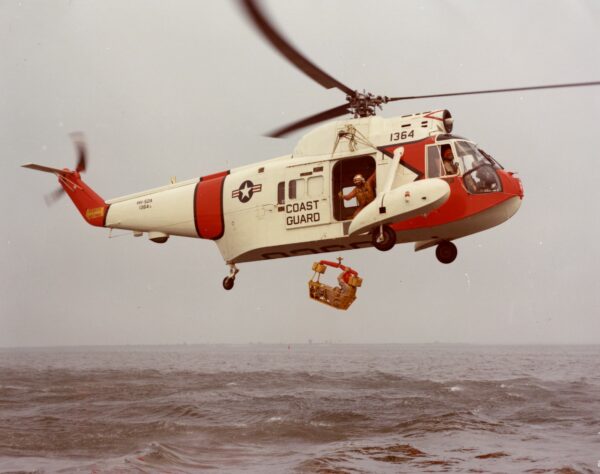Melvin Williams, Jr.—An African American Coast Guardsman’s aviation story
From the Long Blue Line, by Jennifer Kirsop, Public Affairs, Shreveport, Louisiana VA Medical Center
Breadcrumbs
Subpage Navigation
During the Vietnam War era, 18-year-old males had to register with the Selective Service. Instead of simply registering, Melvin W. Williams, Jr., went further. After hearing about a ship rescued by the United States Coast Guard, he knew that would be his path in life and enlisted in the Coast Guard.
He began his military career in the medical field
The sea was already a part of his life. The New Jersey native grew up around the water and was the son of a merchant seaman. He graduated boot camp and joined the medical ratings and service afloat.
“I experienced a lot of things I never thought I would encounter,” Williams said. “I assisted in surgeries while out to sea … appendicectomies, amputations, wounds, and five life recoveries. It was very productive.”

Credit: Courtesy of Jennifer Kirsop, U.S. Department of Veterans Affairs
Retired Chief Warrant Officer Melvin W. Williams, Jr., seated in his office pointing to pictures from his career in Coast Guard aviation.
First African American in Coast Guard aviation jobs
Melvin Williams was not only a history maker, but he also paved the way for African Americans in Coast Guard aviation.
“The Coast Guard was going through a transitional period of integration when I joined,” he said. “This was an interesting time. Acceptance was kind of rare and there were a lot of barriers.”
After his first sea rotation, Williams was stationed at Air Station Elizabeth City, North Carolina, where fate stepped in again. He had the chance to assist a flight crew during a mission. The station’s executive officer heard about Williams’s impressive performance and that flight would mark the beginning of a long and impressive aviation career.
“Getting into Coast Guard aviation as an African American at that time was very hard,” he said. “There were only two of us in my rate. I was told ‘If you want to succeed, here are the books.’ So, I read and read and read some more. Within time, I worked my rate up from E-4 to E-6. It was very challenging, but I overcame those barriers.”
The job of an Aviation Survivalman (ASM) was the combination of parachute rigger and aviation ordnance man.
Williams was the first African American to make parachute jumps at Naval Air Station Lakehurst in New Jersey.
“I had a chance to do some jumps with the Navy and I loved it,” Williams remarked.
He was also the first African American to make chief as an ASM and then as a chief warrant officer (CWO2).
“It was hard trying to establish yourself and advance as an African American at that time,” Williams said. “Leadership didn’t look kindly on our position as a supervisor.”
Before becoming the first African American chief petty officer in his rate, Williams was credited with developing the float strobe light. Versions of this floatation safety device are commonly used today for water survival.
In 1974, Williams was presented the Sikorsky Winged “S” Award for rescues flown in a Coast Guard HH-52 “Seaguard” helicopter while stationed in Miami.

Credit: U.S. Coast Guard
Color image of a Coast Guard HH-52 “Seaguard” helicopter similar to the ones crewed by CWO Melvin Williams during his distinguished Coast Guard aviation career.
Williams retired from the Coast Guard in 1989. He would go on to work at the New Orleans VA until Hurricane Katrina struck. After the devastating storm, he found his way to Shreveport and the Overton Brooks VA Medical Center. There, he not only received his health care, but was also an employee.
During his life, Williams has seen many things come a long way. His color barrier breaking military career proves progress has been and can be made. He has not only made history but also paved the way for African Americans in Coast Guard aviation.
National Coast Guard Museum insider tip:
National Coast Guard Museum visitors will be able to learn more about the history of search and rescue on Deck 2 of the museum in Life Savers Around the Globe.
